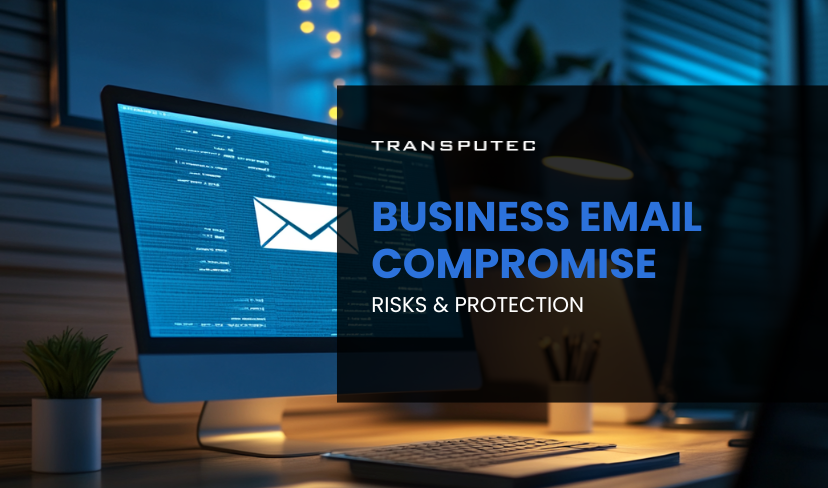Written by KRITIKA SINHA | MARKETING
Business Email Compromise (BEC) is a sophisticated cyberattack targeting organisations by exploiting email accounts to commit fraud. Unlike standard phishing attacks, BEC scams are often highly tailored, making them one of the most financially damaging forms of cybercrime. In 2022 alone, BEC attacks accounted for over $2.7 billion in reported losses, as per the FBI’s Internet Crime Complaint Center (IC3), underscoring the urgent need for companies to protect themselves.
In this comprehensive guide, we’ll explore what BEC is, its potential impact, and how you can protect your organisation.
The Future of BEC: Emerging Trends
As cybercriminals continue to evolve their tactics, we’re seeing new trends in Business Email Compromise:
- AI-Generated Content: Attackers are using AI to create more convincing phishing emails and even deepfake audio for voice phishing.
- Supply Chain Targeting: BEC scams are increasingly targeting supply chain relationships to exploit established trust.
- Mobile-Focused Attacks: With the rise of mobile work, BEC attempts are being optimised for mobile devices to exploit smaller screens and limited security features.
Understanding Business Email Compromise (BEC)
Business Email Compromise involves a cybercriminal gaining access to or impersonating a trusted email account within an organisation, typically a senior executive, finance team member, or other high-level personnel. By manipulating internal communications, the attacker deceives employees or business partners, leading to unauthorised wire transfers, data theft, or fraudulent invoice payments.
Unlike more general email-based attacks, BEC schemes are highly targeted, often meticulously researched, and skillfully timed. Cybercriminals may spend weeks or even months observing email patterns to ensure their impersonation is as credible as possible. This level of effort is why BEC attacks have one of the highest success rates among cyber threats, making them especially dangerous.
Types of Business Email Compromise Attacks
1. CEO Fraud
In CEO fraud, attackers impersonate a high-level executive and request urgent payments from finance departments. Because of the perceived authority of the request, employees often don’t question the legitimacy of the email, resulting in swift and successful fraud.
2. Account Compromise
Here, a legitimate employee’s email is hacked, often through phishing or brute-force attacks. The attacker then uses this account to request payments from other companies or clients, who assume the request is coming from a trusted source.
3. Fake Invoice Scams
A very common BEC tactic, fake invoice scams involves impersonating a known vendor and sending an invoice for payment. The emails look legitimate, and because they involve familiar vendors, they often bypass suspicion.
4. Attorney Impersonation
Cybercriminals pretend to be lawyers or legal representatives to create a sense of urgency, often pressuring employees to act quickly to avoid supposed legal repercussions.
Protect your Business 24/7 with Transputec!
Our Managed SOC Cost Calculator estimates potential expenses for security tools and other costs based on your requirements.
How to Spot a Scam Text Message
Scammers use text messages, or “smishing,” to lure victims with promises of prizes or threats about account issues. Here’s how to spot a scam text message:
1. Strange Phone Numbers
- Scam messages often come from numbers that appear unusual, either very long or with country codes that do not match local numbers.
2. Urgency or Too-Good-To-Be-True Offers
- Phrases like “You’ve won!” or “Act now to claim your reward” are often used. These messages play on excitement or fear to prompt immediate responses.
3. Links to Unknown Websites
- Scammers use shortened URLs to disguise malicious links. Avoid clicking any link from unknown senders, especially if it looks strange.
4. Requests for Personal Information
- Messages asking for your Social Security number, password, or other sensitive information are likely scams. Legitimate companies rarely use SMS for such requests.
The Risks of Business Email Compromise
BEC attacks pose significant risks to businesses, going beyond financial loss. Let’s explore the core areas impacted by BEC.
1. Financial Losses
With BEC scams, the average financial loss per incident is estimated at around $75,000 to $100,000, with some cases reaching millions. Unlike traditional fraud, recovering BEC-related losses is notoriously difficult as funds are usually transferred to overseas accounts and withdrawn swiftly.
2. Reputational Damage
BEC attacks can severely damage a company’s reputation. When clients or partners fall victim to BEC fraud via an organisation’s compromised email, it can harm relationships and lead to distrust. A single instance of BEC can have long-term effects on customer confidence.
3. Legal and Compliance Risks
Companies are obligated to protect sensitive information under regulations like GDPR, HIPAA, and PCI-DSS. Failing to secure email accounts that lead to breaches may result in regulatory fines and additional compliance hurdles.
4. Operational Disruption
BEC incidents often force companies into lengthy forensic investigations, causing severe disruptions to daily operations. Beyond the investigation, affected organisations may need to overhaul their email security protocols and invest in additional cybersecurity measures, which requires both time and resources.
How to Protect Your Business from Business Email Compromise
BEC attacks are preventable with a comprehensive security strategy. Here are proven ways to safeguard your organisation:
1. Implement Multi-Factor Authentication (MFA)
Multi-factor authentication (MFA) significantly reduces the risk of unauthorized access by requiring a second layer of verification. Even if an attacker gains access to an email password, they’re unlikely to have access to the second factor, such as a code sent to a mobile device.
2. Invest in Security Awareness Training
Security awareness training is crucial in helping employees recognise the signs of a Business Email Compromise. Regular training on phishing detection, how to handle suspicious emails, and when to verify requests can greatly minimise the risk of BEC attacks.
3. Use Email Filtering and Anti-Phishing Solutions
Advanced email filtering systems can flag potential BEC attempts, identifying suspicious activity based on sender addresses, email headers, and language patterns. Anti-phishing tools, specifically designed to detect unusual email behaviour, are another powerful defence mechanism against BEC.
4. Establish Clear Verification Protocols
Create company-wide policies requiring verification for high-value transactions or changes to payment instructions. These protocols should mandate a secondary confirmation, whether by phone or another secure channel, before executing financial requests.
5. Monitor for Anomalies with Artificial Intelligence
AI-powered monitoring tools are becoming increasingly effective at detecting unusual behaviour within email accounts. AI algorithms can analyse and flag suspicious activity, such as unusual login locations or atypical email requests, allowing you to act before a BEC attack succeeds.
Real-World Example: How a BEC Attack Can Unfold
A small logistics company recently faced a BEC attack that nearly cost them $200,000. The attacker impersonated a trusted vendor, requesting a routine payment but with altered bank details. Employees, seeing the familiar vendor’s email, processed the payment. Within hours, the money was transferred to an overseas account. Because the company lacked clear verification protocols, they could not identify the fraudulent request until it was too late.
This scenario highlights the critical importance of vigilance and the right preventive measures.
Why Transputec’s BEC Solutions Are Your Best Defence
At Transputec, we offer tailored cybersecurity solutions, including BEC-specific defences that empower businesses to recognise, prevent, and respond to threats. Our comprehensive BEC protection solutions, combined with our expertise and 24/7 support, provide the robust defence your organisation needs in today’s threat landscape.
Contact us today to learn more about how Transputec’s services can help protect your business from cyber threats.
Conclusion
Business Email Compromise is a highly sophisticated and potentially devastating cyber threat. Without the right defences in place, organisations risk substantial financial loss, operational disruptions, and long-term reputational damage. Protecting against BEC is not just about technology; it’s about adopting a proactive, comprehensive approach that includes employee training, verification protocols, and specialised cybersecurity tools.
To safeguard your organisation from BEC, contact Transputec today and get in touch with our cybersecurity experts. Let’s work together to make your business secure.

Secure Your Business!
Ready to explore how we can enhance your security posture? Contact us today to speak with one of our experts.
FAQs
What is Business Email Compromise (BEC) and how does it differ from phishing?
Business Email Compromise (BEC) is a type of cyberattack where attackers impersonate trusted email accounts to manipulate employees into making unauthorised payments or sharing sensitive information. Unlike generic phishing, BEC targets specific individuals, often high-ranking executives, and requires careful planning to exploit existing business relationships.
Why are Business Email Compromise attacks so costly?
BEC attacks are costly because they often involve large sums of money requested through what appears to be legitimate transactions. Additionally, recovering BEC-related funds is challenging as they’re quickly moved overseas. With a lack of immediate suspicion, the fraudulent payments typically aren’t noticed until it’s too late.
How can my business recognise a potential BEC attempt?
Common signs of BEC attempts include unexpected payment requests, subtle email address variations, urgency or secrecy in the language, and instructions to send funds to new or overseas accounts. Implementing verification processes for high-value requests can also help identify unusual requests.
Can technology alone prevent Business Email Compromise?
While technology like MFA, email filtering, and AI monitoring tools is essential, it cannot fully prevent BEC on its own. Employee training and internal verification protocols are critical components of a well-rounded BEC defence strategy, helping staff recognise and respond to threats effectively.
How can Transputec help protect my company from BEC attacks?
Transputec provides a combination of cybersecurity tools and expert guidance tailored to BEC prevention. We offer training programs, advanced detection technologies, and strategic support to help businesses implement a comprehensive security posture, protecting them from the specific risks of Business Email Compromise.




